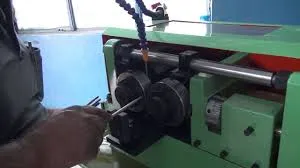
-
 Afrikaans
Afrikaans -
 Albanian
Albanian -
 Amharic
Amharic -
 Arabic
Arabic -
 Armenian
Armenian -
 Azerbaijani
Azerbaijani -
 Basque
Basque -
 Belarusian
Belarusian -
 Bengali
Bengali -
 Bosnian
Bosnian -
 Bulgarian
Bulgarian -
 Catalan
Catalan -
 Cebuano
Cebuano -
 Corsican
Corsican -
 Croatian
Croatian -
 Czech
Czech -
 Danish
Danish -
 Dutch
Dutch -
 English
English -
 Esperanto
Esperanto -
 Estonian
Estonian -
 Finnish
Finnish -
 French
French -
 Frisian
Frisian -
 Galician
Galician -
 Georgian
Georgian -
 German
German -
 Greek
Greek -
 Gujarati
Gujarati -
 Haitian Creole
Haitian Creole -
 hausa
hausa -
 hawaiian
hawaiian -
 Hebrew
Hebrew -
 Hindi
Hindi -
 Miao
Miao -
 Hungarian
Hungarian -
 Icelandic
Icelandic -
 igbo
igbo -
 Indonesian
Indonesian -
 irish
irish -
 Italian
Italian -
 Japanese
Japanese -
 Javanese
Javanese -
 Kannada
Kannada -
 kazakh
kazakh -
 Khmer
Khmer -
 Rwandese
Rwandese -
 Korean
Korean -
 Kurdish
Kurdish -
 Kyrgyz
Kyrgyz -
 Lao
Lao -
 Latin
Latin -
 Latvian
Latvian -
 Lithuanian
Lithuanian -
 Luxembourgish
Luxembourgish -
 Macedonian
Macedonian -
 Malgashi
Malgashi -
 Malay
Malay -
 Malayalam
Malayalam -
 Maltese
Maltese -
 Maori
Maori -
 Marathi
Marathi -
 Mongolian
Mongolian -
 Myanmar
Myanmar -
 Nepali
Nepali -
 Norwegian
Norwegian -
 Norwegian
Norwegian -
 Occitan
Occitan -
 Pashto
Pashto -
 Persian
Persian -
 Polish
Polish -
 Portuguese
Portuguese -
 Punjabi
Punjabi -
 Romanian
Romanian -
 Russian
Russian -
 Samoan
Samoan -
 Scottish Gaelic
Scottish Gaelic -
 Serbian
Serbian -
 Sesotho
Sesotho -
 Shona
Shona -
 Sindhi
Sindhi -
 Sinhala
Sinhala -
 Slovak
Slovak -
 Slovenian
Slovenian -
 Somali
Somali -
 Spanish
Spanish -
 Sundanese
Sundanese -
 Swahili
Swahili -
 Swedish
Swedish -
 Tagalog
Tagalog -
 Tajik
Tajik -
 Tamil
Tamil -
 Tatar
Tatar -
 Telugu
Telugu -
 Thai
Thai -
 Turkish
Turkish -
 Turkmen
Turkmen -
 Ukrainian
Ukrainian -
 Urdu
Urdu -
 Uighur
Uighur -
 Uzbek
Uzbek -
 Vietnamese
Vietnamese -
 Welsh
Welsh -
 Bantu
Bantu -
 Yiddish
Yiddish -
 Yoruba
Yoruba -
 Zulu
Zulu
thread rolling machine setup product
Optimizing Thread Rolling Machine Setup for Enhanced Productivity
In the manufacturing landscape, efficiency and precision are paramount, particularly in processes involving thread rolling machines. These machines are instrumental in producing threads on various materials, contributing significantly to the advancement of industries like automotive, aerospace, and construction. To maximize productivity and ensure the quality of the finished product, the setup of the thread rolling machine must be meticulously executed.
Understanding Thread Rolling Machines
Thread rolling is a cold working process used to create external threads on cylindrical objects. Unlike traditional cutting methods, thread rolling reshapes the material without material removal, which results in stronger threads due to the work-hardening effect. A thread rolling machine utilizes specially designed dies that mold metal into the desired thread profile, making it an efficient choice for high-volume production.
Importance of Proper Setup
A well-executed setup procedure is crucial for achieving the desired thread specifications and minimizing machine downtime. Proper alignment of dies, adjustment of rolling pressure, and the selection of appropriate materials are essential for ensuring the machine operates at optimal levels. An improper setup may lead to issues such as misaligned threads, excessive wear on dies, or even machine breakdowns, all of which can severely impact production efficiency.
Step-by-Step Setup Procedure
1. Preparation Before commencing the setup, it is vital to gather all necessary tools and components. This includes thread rolling dies, workpieces, and measuring instruments. Ensuring that all elements are in good order will facilitate a smoother setup process.
thread rolling machine setup product

2. Die Selection Choosing the right dies based on the desired thread specifications is crucial. Dies come in various shapes and sizes, and consulting the machine’s manual will help in selecting the appropriate type for the specific threading application.
3. Alignment Proper alignment of the dies is essential for uniform thread formation. The machine operator should ensure that the dies are parallel and positioned correctly concerning the workpiece. Using precision measuring tools can assist in achieving the correct alignment.
4. Pressure Adjustment After aligning the dies, it is necessary to set the rolling pressure. This setting should be adjusted according to the material type and thickness of the workpiece. Too much pressure could lead to material deformation, while insufficient pressure can result in inadequate thread formation.
5. Initial Testing Conducting a test run with a scrap piece is recommended to assess the setup. This step allows the operator to evaluate the quality of the threads produced and make any necessary adjustments before transitioning to full-scale production.
6. Monitoring Once production commences, it is essential to continuously monitor the machine’s performance. Regular checks for die wear, thread quality, and machine alignment can help identify potential issues early, allowing for timely interventions.
Conclusion
The setup process of a thread rolling machine is a critical factor in achieving high productivity and quality in thread manufacturing. By following a structured setup procedure, manufacturers can optimize machine performance, reduce downtime, and ultimately enhance product quality. As industries continue to evolve, the importance of efficient machine setup practices cannot be overstated. Investing in operator training and maintaining equipment will further bolster the effectiveness of thread rolling operations, positioning businesses for success in a competitive market.
